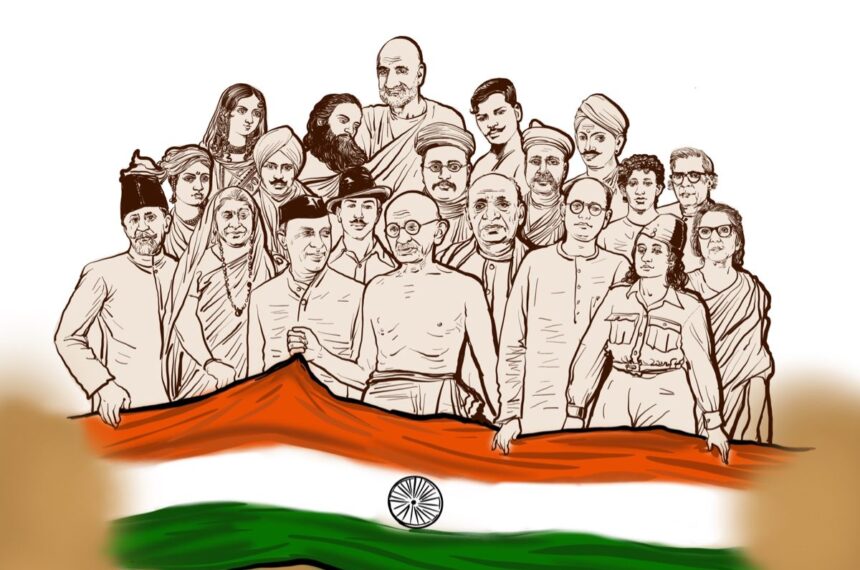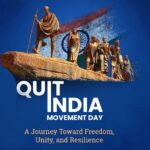🇮🇳 10 Powerful Truths About India’s Independence Day That Will Inspire Every Generation
Independence Day of India, celebrated annually on August 15, is not just a national holiday but a soul-stirring commemoration of sacrifice, struggle, and sovereignty. This day marks the end of British colonial rule in 1947 and the rebirth of India as a free democratic nation.
- 📜 History of India’s Independence Day
- 🧭 Timeline of Key Events
- 📊 Incredible Facts About Indian Independence Day
- 🎯 Significance of Independence Day in Modern India
- 🛡️ Celebration of Sovereignty
- 🧑🤝🧑 Unity in Diversity
- 📣 Voice to the Voiceless
- 🌱 Foundation of Democracy
- 🌏 Global Influence
- 🪷 How It’s Observed in India
- 💌 Patriotic Wishing Lines
- 🙋 Frequently Asked Questions (FAQs)
- Q1. Why is August 15 celebrated as Independence Day?
- Q2. Who was the first Prime Minister of independent India?
- Q3. What happens on Independence Day?
- Q4. What does the Indian flag symbolize?
- Q5. What is the difference between Republic Day and Independence Day?
- 📌 Important Points to Remember
- ✨ Impact on Our Daily Life
- 🧑 Rights & Freedoms
- 🏫 Education for All
- 💼 Economic Reforms
- 🎨 Cultural Renaissance
- 🤝 Civic Responsibility
- 🧠 Importance in Life and Society
- 🏁 Conclusion: Let Freedom Live Loud
This in-depth guide is more than a textbook history—it’s a human-centered, emotional, and deeply patriotic journey through the history, facts, timeline, significance, celebration, FAQs, and most importantly, the impact of Independence Day on our daily lives.
📜 History of India’s Independence Day
🧭 The Colonial Grip
British rule in India officially began in 1858, following the Revolt of 1857. Over nearly 90 years, India endured exploitation, oppression, and a denial of basic rights under colonial administration.
🕊️ The Struggle for Freedom
From Mahatma Gandhi’s non-violence movement, to Netaji Subhas Chandra Bose’s INA, to revolutionaries like Bhagat Singh and Chandrashekhar Azad, India’s freedom fighters launched countless movements—non-violent and militant alike—to shake off colonial chains.
📜 The Day of Freedom: August 15, 1947
After prolonged political negotiation, mass protests, and global pressure post-World War II, British Parliament passed the Indian Independence Act 1947, making India a sovereign nation on August 15, 1947. The first Prime Minister, Jawaharlal Nehru, addressed the nation with his legendary “Tryst with Destiny” speech.
🧭 Timeline of Key Events
| Year | Event |
|---|---|
| 1857 | First War of Independence (Sepoy Mutiny) |
| 1885 | Indian National Congress formed |
| 1905 | Swadeshi Movement begins after Bengal partition |
| 1919 | Jallianwala Bagh Massacre |
| 1920 | Non-Cooperation Movement by Gandhi |
| 1930 | Dandi March (Salt Satyagraha) |
| 1942 | Quit India Movement |
| 1946 | Naval Mutiny; INA trials |
| 1947 | Independence achieved on August 15 |
📊 Incredible Facts About Indian Independence Day
India was partitioned on the same day, leading to the creation of Pakistan.
Lord Mountbatten, the last Viceroy, chose August 15 to align with Japan’s WWII surrender.
India’s national flag was first hoisted officially at Red Fort on August 15, 1947.
Mahatma Gandhi did not attend the celebration—he was in Bengal trying to stop communal riots.
The Indian Constitution was adopted on January 26, 1950, making India a Republic.
India gained dominion status before becoming fully sovereign in 1950.
The Indian national anthem, “Jana Gana Mana,” was adopted in 1950.
The tricolor was designed by Pingali Venkayya, with saffron, white, and green symbolizing courage, peace, and prosperity.
Red Fort becomes the ceremonial center each year for the Prime Minister’s address.
The first Independence Day was celebrated with fireworks, prayers, and rallies across the country.
🎯 Significance of Independence Day in Modern India
🛡️ Celebration of Sovereignty
It marks the end of foreign rule and the beginning of self-determination.
🧑🤝🧑 Unity in Diversity
Despite religious, cultural, and linguistic differences, the movement brought Indians together with one shared identity.
📣 Voice to the Voiceless
It commemorates the efforts of ordinary citizens—farmers, students, women—who stood up for liberty.
🌱 Foundation of Democracy
August 15 laid the bedrock of democratic values, civil rights, and constitutional governance in India.
🌏 Global Influence
India’s independence inspired other colonies in Asia and Africa to seek freedom through non-violence and civil disobedience.
🪷 How It’s Observed in India
🏰 Red Fort Ceremony
Every year, the Prime Minister hoists the national flag at Red Fort, followed by an address to the nation.
🏫 Schools & Institutions
Parades, patriotic skits, debates, and songs are organized in schools, colleges, and workplaces.
🎆 Flag Hoisting
Families and housing societies hoist the flag and sing the national anthem with pride.
📺 Broadcast & Digital
Television channels air historical documentaries, patriotic films, and speeches. Social media fills with #IndependenceDayIndia trends.
💌 Patriotic Wishing Lines
“Freedom is not given—it is earned with blood and sacrifice. Happy Independence Day!”
“Let’s honor the valiant heroes who gave us this day. Jai Hind!”
“Proud to be an Indian, not just today, but every day. Happy 15th August!”
“Let us remember: One nation, one flag, one identity. Happy Independence Day!”
🙋 Frequently Asked Questions (FAQs)
Q1. Why is August 15 celebrated as Independence Day?
It’s the day when India officially gained freedom from British colonial rule in 1947.
Q2. Who was the first Prime Minister of independent India?
Jawaharlal Nehru. He gave the famous “Tryst with Destiny” speech on the midnight of August 14–15.
Q3. What happens on Independence Day?
National flag hoisting, Prime Minister’s address, cultural programs, military parades, and patriotic celebrations across India.
Q4. What does the Indian flag symbolize?
Saffron: Courage and sacrifice
White: Peace and truth
Green: Prosperity
Ashoka Chakra: Dharma (righteousness)
Q5. What is the difference between Republic Day and Independence Day?
Independence Day (Aug 15): Marks the end of British rule
Republic Day (Jan 26): Marks the enforcement of the Indian Constitution in 1950
📌 Important Points to Remember
India’s freedom was earned after 200 years of colonization.
Millions sacrificed their lives and livelihoods for independence.
The struggle involved both non-violence and armed revolution.
August 15 is not just a holiday—it’s a reminder of duty, unity, and patriotism.
India’s democracy, rights, and freedom owe their existence to this day.
✨ Impact on Our Daily Life
🧑 Rights & Freedoms
Freedom of speech, religion, and the right to vote—all exist because of August 15, 1947.
🏫 Education for All
Post-independence policies aimed at universal education and equality across all castes and genders.
💼 Economic Reforms
While the economy faced challenges initially, independence gave India control over its resources and future.
🎨 Cultural Renaissance
Post-1947 India saw a resurgence in art, cinema, literature, and scientific development—free from colonial suppression.
🤝 Civic Responsibility
Independence Day is a yearly call to action—a reminder that democracy is participatory, not passive.
🧠 Importance in Life and Society
Reminds us to respect our heritage and those who fought for it.
Encourages us to uphold values of justice, liberty, and equality.
Teaches children the meaning of patriotism and civic responsibility.
Keeps alive the stories of bravery, resistance, and unity.
Inspires today’s generation to work for a stronger, corruption-free, inclusive India.
🏁 Conclusion: Let Freedom Live Loud
Independence Day is not a one-day event. It’s a living, breathing legacy that asks us not to forget, not to take for granted. It’s a daily responsibility, not just a date in history.
As we raise our flags and sing our anthems, let’s also raise our voices for:
Better governance
Inclusive growth
Education for all
Equal rights
Global peace
Let this 15th August be a pledge to be worthy of the freedom gifted to us, to preserve it, and to pass it on brighter and stronger to the next generation.
🇮🇳 “We got freedom after many sacrifices. Now it’s our turn to make India proud every day.”
Happy Independence Day! Jai Hind! Vande Mataram!









With havin so much content and articles do you ever run into any issues of plagorism or copyright infringement? My blog has a lot of completely unique content I’ve either created myself or outsourced but it appears a lot of it is popping it up all over the internet without my permission. Do you know any ways to help prevent content from being stolen? I’d truly appreciate it.
I discovered your blog site on google and check a few of your early posts. Continue to keep up the very good operate. I just additional up your RSS feed to my MSN News Reader. Seeking forward to reading more from you later on!…